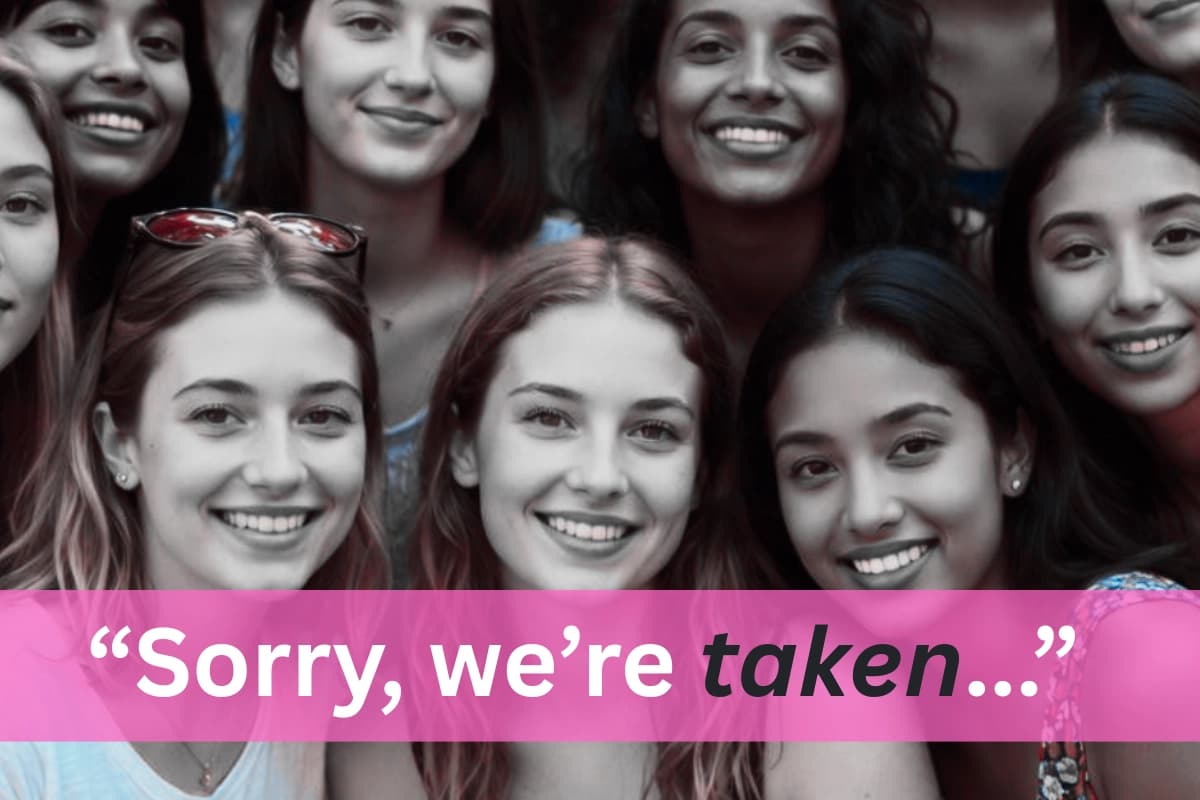AI Threesomes: Why It's So Hard To Simulate Group Sex

AI can handle most porn “scenes” you throw at it these days. But there’s one scenario that still causes problems. Well, it’s not even a scenario. It’s a specific type of request.
Threesomes.
Or any kind of group sex.
Yep. The moment you introduce a third participant, today’s AI suddenly turns into a confused, stumbling fool. Chatbots forget who’s touching who. Image generators start sprouting extra limbs. Video tools stir up a blurry human soup.
Why is it so bloody hard to create scenes that defy the monogamous convention of MF, FF or MM?
Well, let’s take a proper look under the hood - because the answer is surprisingly technical, and absolutely relevant if you’re trying to push your AI porn tools to their limits.
The real bottleneck is geometry. And math. And memory. And… well, I guess it's just complicated.
The Threesome Problem With Language Models
First up, what about the various AI girlfriend chatbots?
How hard can it be to create a chat window with TWO AI girls responding to your messages?
Visually? Not hard at all. Any half-decent dev can slap two avatars on the screen, colour-code their text bubbles and call it a “threesome mode”.
The problem is underneath that UI, there’s usually one single brain doing all the thinking.
Modern AI chatbots - including the “NSFW girlfriend” crowd - are all built on the same basic idea:
Take the entire conversation as a block of text →Feed it to a big prediction engine →Get the next chunk of text back.
That’s it. There is no real concept of:
separate minds
separate bodies
spatial positions
who is doing what to whom
So when you say:
“OK girls, both of you come closer and tell me what you want…”
…you’re asking a single model to:
remember two distinct personalities
maintain a consistent “voice” for each
track their actions in space
respond in a way that feels like both are alive and reacting
It’s doable in short bursts, but sustained over a long conversation, context is lost super fast. Every model has a maximum amount of conversation it can “see” at once (that's what we call the context window).
This is particularly the case if the text you feed it pronouns - the bane of AI threesomes.
Natural language is lazy, right? We say:
“She moves closer.”
“He touches her there.”
“She moans louder.”
And so the model has to constantly guess:
which she
which her
who’s where in relation to you
Get it wrong and the scene stops making sense.
This leads to delightful gibberish like:
“She leans over you and kisses her neck.” (Wait, whose neck?)
“You feel her hand on your chest as she kneels between your legs.” (So… are there two girls doing the same thing now?)
Without explicit, structured tagging like [GIRL_A] / [GIRL_B] / [USER] all the time, the model gets lost in pronoun hell. But if you over-tag, the whole fantasy reads like a badly formatted screenplay. Most NSFW chat platforms don’t enforce that kind of rigid structure because it kills the mood (obviously).
It's not just words, either - there's also the issue of state tracking.
In group sex, position matters.
Language models, however, have no mental 3D engine. They’re not tracking a virtual scene with coordinates. Unless the devs build explicit scaffolding (like an internal “position state” that the model is forced to respect), the AI will struggle to keep track of exactly what's happening.
Despite the challenges, there are tools out there that are willing to take a crack at interactive group play.
SoulKyn is one such example, with multi-character conversations possible in its AI Group Chat. This lets you chat with up to 3 AI characters at the same time. It uses a kind of “Narrator AI” that supervises the conversation and helps allocate turns. It's actually pretty cool, but it's still a bit like conducting an orchestra rather than fapping away to a fantasy.
Other companions I've dabbled with simply lose their shit if you introduce a hypothetical third character into the conversation. They might reference her and interact with her, but the character will have as much life as a dildo sitting on the binary bedsheets.
Put simply: the vast majority of AI girlfriends are built specifically for one-to-one play.
Emotional and sexual chemistry between two AI partners is something current models struggle to sustain.
The Threesome Problem With Image Generators
If wrangling text-based threesomes is tricky, generating explicit images of group sex is arguably even harder. Image models like Stable Diffusion, DALL·E, and Midjourney have well-documented trouble rendering multiple people coherently in one frame.
When you ask these AIs for, say, “a threesome with two women and one man,” the results often include bizarre artifacts and anatomical nightmares.
Case in point, ladies and gentlemen: check out this monstrosity lol.
You will often get a tangle of body parts that only vaguely resembles three humans, or an extra phantom limb emerging from someone’s back.
For Stable Diffusion (the engine behind most AI porn generators), these problems are notorious. Stable Diffusion tends to muddle multi-person scenes unless very carefully guided. Keeping consistent faces and limbs for each individual is hit-or-miss – the model might duplicate one person’s face on another’s body, or give someone two heads.
Often the output shows a blob of human-like forms in a configuration that defies anatomy (like the example above).
The issue is partly that these models lack an explicit concept of counting or distinct entities. Simply adding “two women and one man” to your prompt doesn’t guarantee the model will produce exactly three separate people.
Many models have learned from lots of images of single individuals (e.g. single models or couples in relatively simple poses), but fewer images of three or more people entwined.
Generating two people kissing is already a tall order (AI often blurs their faces together); generating three people engaged in a wild shag taxes the model to the point where it simply doesn't have the source material to produce reliable results.
Sure, you can try adding phrases like “duplicate, extra limbs, cloned face, disfigured, missing arms, extra legs, fused fingers” to your negative prompts... but it's a game of trial-and-error that unravels super fast with three bodies in the mix.
Experienced AI artists have developed techniques to improve multi-person outputs.
One method is using ControlNet or “regional” prompting to give the AI a better handle on each character’s pose and location. There’s an extension known as “Latent Couple” for Stable Diffusion WebUI that lets you designate separate regions in the image for each character and apply distinct prompts to them.
This can enforce, say, one woman on the left and another on the right, each rendered somewhat independently, reducing the chance they morph together.
A recent demo by Astria.ai showed how you could train a custom LoRA model for each person (e.g. one for a specific man and one for a woman), then prompt the model with both LoRAs and carefully structured tokens so that it generates the two together in one scene.
Extending that to three people would be even more complex, but it’s theoretically possible - you’d train each “character” separately and then combine them via prompt magic. These workarounds, however, are not user-friendly.
And user-friendly is damn near essential for the type of consumer that purchases an AI porn subscription.
As for AI threesome videos...
Models like Sora, RunDiffusion, Pika, and all the underground NSFW-modded video models simply haven’t seen enough multi-person explicit scenes to know what normal group sex motion looks like.
Most porn videos they train on include:
solo scenes
straightforward boy-girl
some lesbian content
But coordinated 3-person sex with complex angles and positions?
We're still nowhere close to having a viable NSFW generator that does this well.
Will that change?
Absolutely.
AI is getting better at multi-agent reasoning, better at 3D spatial modelling, better at video consistency, and better at handling complex interactions. The next wave of diffusion models will have richer training datasets, more sophisticated physics-aware layers, and actual multi-person choreography baked in. And the big LLMs are already moving toward multi-agent frameworks where “separate minds” aren’t just a UI gimmick but a genuine architectural feature.
Basically: AI is getting better at damn near everything.
Comments
More from the blog



